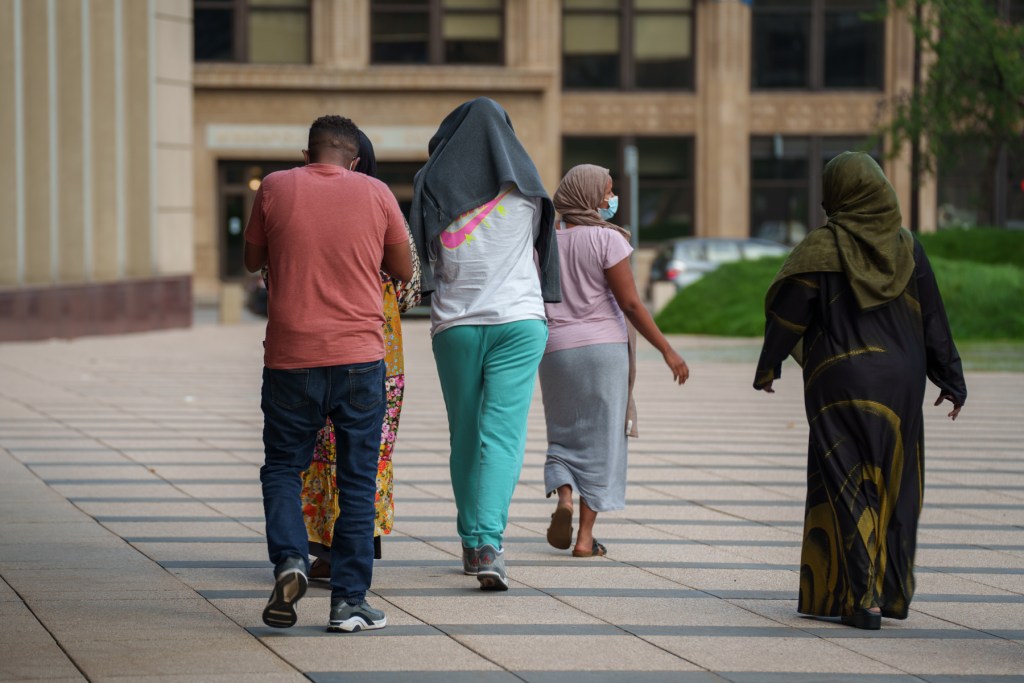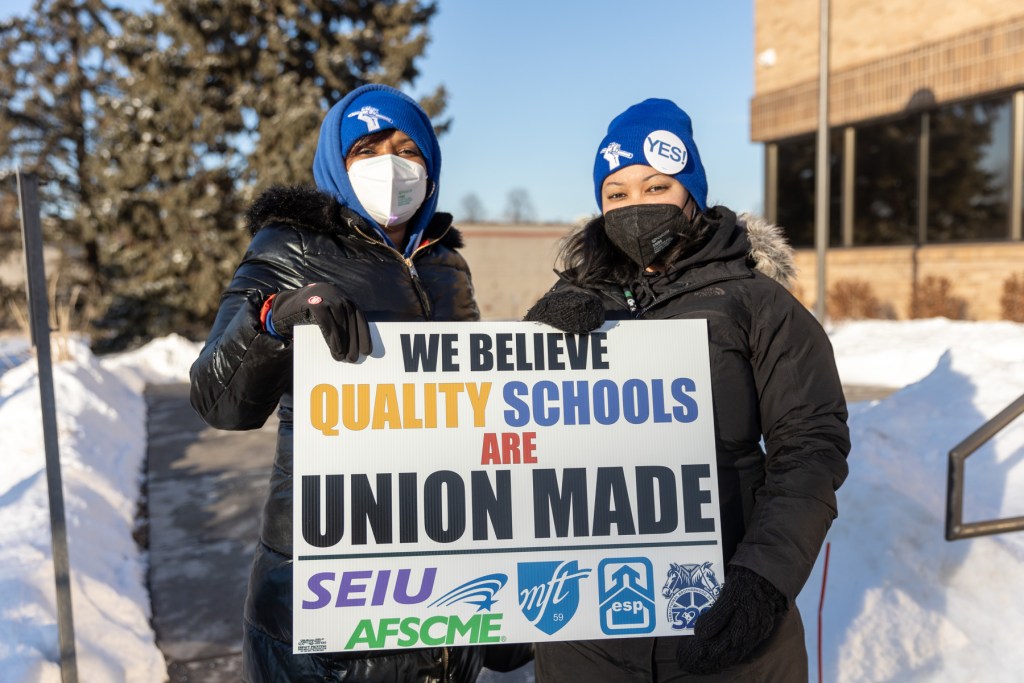Minnesota voters elected the most diverse Legislature in the state’s history in November. Sahan Journal covered the campaigns from the start.
Across the country, it often felt as if the fate of democracy was on the ballot in the midterm elections. Things felt a bit more hopeful in Minnesota. We witnessed historic wins for newcomers to state government, and developed new ways to make voting more accessible for multilingual people. Democrats in the state also won a trifecta: control of the state House and Senate, as well as the governor’s office.
I’ve been covering elections for Sahan Journal over the last two years. Coming off of a contentious Minneapolis city election cycle last year, Sahan Journal charged right into the midterms. As the election cycle ramped up, voters focused on concerns about the rising cost of living and the U.S. Supreme Court decision to overturn abortion rights. Racial justice, public safety, and pandemic recovery remained key issues.
Minnesota’s Fifth Congressional District is solidly Democratic, but tends to produce a contentious race when there’s a challenger within the party. We broke the news that former Minneapolis city councilmember and public safety advocate Don Samuels was going to run against incumbent Congresswoman Ilhan Omar in the district (he lost in the August primaries). We continued to cover campaigns for state elections throughout the year by publishing voter guides, such as for the Hennepin County Attorney’s Race.
New districts created with updated U.S. Census data posed barriers for some elected officials and granted opportunities for other hopeful candidates. That same data unlocked a requirement in the federal Voting Rights Act of 1965, as Ramsey County held its first elections with trained interpreter election judges who speak Hmong.
While the state expanded voter accessibility, some DFL volunteers targeted East African caucus members with unusual texts and phone calls questioning their legitimacy.
A controversial absentee ballot mishandling investigation continued to unfold in the background of the election cycle.
Here’s a further glimpse into Sahan Journal’s whirlwind political coverage in Minnesota in the last year:
1. A special Qur’an holds the signature of almost every Minnesota Muslim elected to office. At a historic swearing-in ceremony, three Minneapolis City Council members added their names to the list.
The swearing-in ceremony for newly elected officials in Minneapolis marked a historic moment for the city’s Muslim community: The council had never seated this many Muslim members.
Jeremiah Ellison of Ward 5, Jamal Osman of Ward 6, and Aisha Chughtai of Ward 10 used a ceremonial 14-by-20 inch Qur’an to take their oath of office in January. Imam Asad Zaman of the Muslim American Society had ordered the Qur’an when Congresswoman Ilhan Omar was first elected to office, predicting that a growing number of Muslims in the state would need it for their own ceremonies.
After taking their oaths of office, the elected officials signed a blank page on the inside next to more than a dozen names, including state Attorney General Keith Ellison, state Senator Omar Fateh, and others. Zaman said he encourages Muslim elected officials across the state of Minnesota at all levels of government to reach out to him to utilize the Qur’an, too.
As political representation in Minnesota evolves to better reflect the state’s residents, the moment set the stage for the coming year.
2. Ramsey County is training Hmong election judges after U.S. Census data showed growth in the voting base. The effort is required by the Voting Rights Act of 1965.
The state’s changing demographics can pose political implications at all levels of the democratic process including the voting process.
For the first time in Minnesota history, a local jurisdiction was required by law to train and provide multilingual election judges. The 2020 U.S. Census showed that the Hmong population in Ramsey County makes up more than 5 percent of the county’s voting-age residents. The Voting Rights Act of 1965 mandates that counties with more than 5 percent of a population that speaks a different language are required to train interpreter election judges at the polls.
The county provided Hmong-speaking election judges for the first time at polls during the August primaries and continued the service in November.
3. Latina lawmakers and political candidates raise concerns about their place in state politics as redistricting poses new challenges
A record number of women entered Minnesota politics in 2020, but two years later several state legislators announced they would be leaving state government—including the legislature’s only two Latina legislators.
Senator Patricia Torres Ray (DFL–Minneapolis), the state’s first Latina legislator, announced her retirement after 16 years. DFL Caucus Leader Senator Melisa López Franzen stepped down because of the new political maps produced by redistricting. She was the first woman of color and Latina elected as DFL caucus leader.
Then, a new, energetic candidate entered the mix. Maria Isa Pérez-Hedges, a Puerto Rican rapper, artist, and activist ran (and later won) to represent St. Paul’s West Side in the state house. She ran for the seat of another outgoing Latino legislator—Representative Carlos Mariani (DFL–St. Paul)—after he announced his retirement in January.
4. In 164 years of statehood, no Black woman has ever served in the Minnesota Senate. In November, six could be elected.
As campaigning kicked off for the midterm elections, the political shakeup among Latino legislators called the diversity of the next Legislature into question. But while some elected officials left their posts, an even greater number sought to fill their seats at the table.
More than half a dozen Black women campaigned to become the first Black women ever elected to the state Senate. Sahan Journal followed their campaigns from the start with comprehensive Q&A stories with each candidate. We closely watched their wins and losses through the August primaries. And we documented three historic wins on election night in November.
5. Historic wins: Black women were elected to the Minnesota Senate for the first time Tuesday.
State Senator-elect Zaynab Mohamed ran in Torres Ray’s Minneapolis district and won, becoming one of the first Black women and youngest woman elected to the state Senate. We first wrote about her candidacy announcement in December 2021.
Representing the east metro, state Senator-elect Clare Oumou Verbeten joined Zaynab in her historic win.
Former state representative Erin Maye Quade will also be returning to the state legislature, this time joining Zaynab and Oumou Verbeten in the Senate.
Their wins, and those of dozens others, delivered the most diverse legislature in Minnesota history. Sahan Journal verified that at least 35 out of 201 members of next year’s House and Senate identify as people of color. Twenty-two of those are women or nonbinary. A record 11 of next year’s Minnesota lawmakers also belong to the LGBTQ community.






